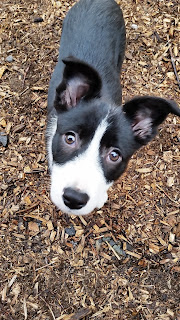More is More...
When do you know you have too many dogs? When you can not commit daily to doing something with each one, is my answer. I have More than some people, and Fewer (not less as is common poor usage brought on by "Less Calories" for one) than others. My goal with each dog is to find what makes them tick and go from there. They are all different, even those of the same breed-I try to never compare. Right now I am working with a couple younguns, who are about as different as the sun and moon. Neither is "better", but what makes them tick and their natural instincts that I see, affect how I am approaching their training. With many pups, they melt into you when you call them, or touch them. With some (especially a BC pup), as they begin to lose teeth, you might see their natural inclination is to be just out of reach, or heightened body sensitivity. They are just outside of the "bubble" or flight zone, if thinking in terms of stock. They aren't trying to be
